► Testing Toyota’s mini hot-hatch
► A return to the classic hot-hatch formula
► On sale early 2018 and pricey at £26,295
We know what you’re thinking – someone’s bolted the exhaust and wing from a Koenigsegg Agera to a Yaris, and painted it to look like Rufio from the Lost Boys.
As mad as it looks, this isn’t a rendering or rainy day creation from your friend’s Forza storefront, it’s the production-ready fire-breathing Yaris GRMN. So is it any good? Read the CAR review of the 2018 Toyota Yaris GRMN to find out.
Toyota Yaris GRMN review: GRMN? What’s all this?
Toyota’s new performance badge, which served as a Rorschach test among road testers on the launch; some filled in the missing vowels and saw Garmin, others the word German, and one even thought it looked like Gremlin.
The true meaning is perhaps even odder – Gazoo Racing Meister of the Nurburgring – pointing at Toyota’s motorsports arm (which has vehicles in both endurance and rally disciplines) and the small team of master drivers and engineers that took this Yaris model from shopping trolley to hot hatch via the Green Hell.
This Yaris is actually the first of many forthcoming GRMN cars and therefore acts as a statement of intent for what the badge represents. After driving it, we think the slightly clumsy acronym actually stands for something very exciting indeed.
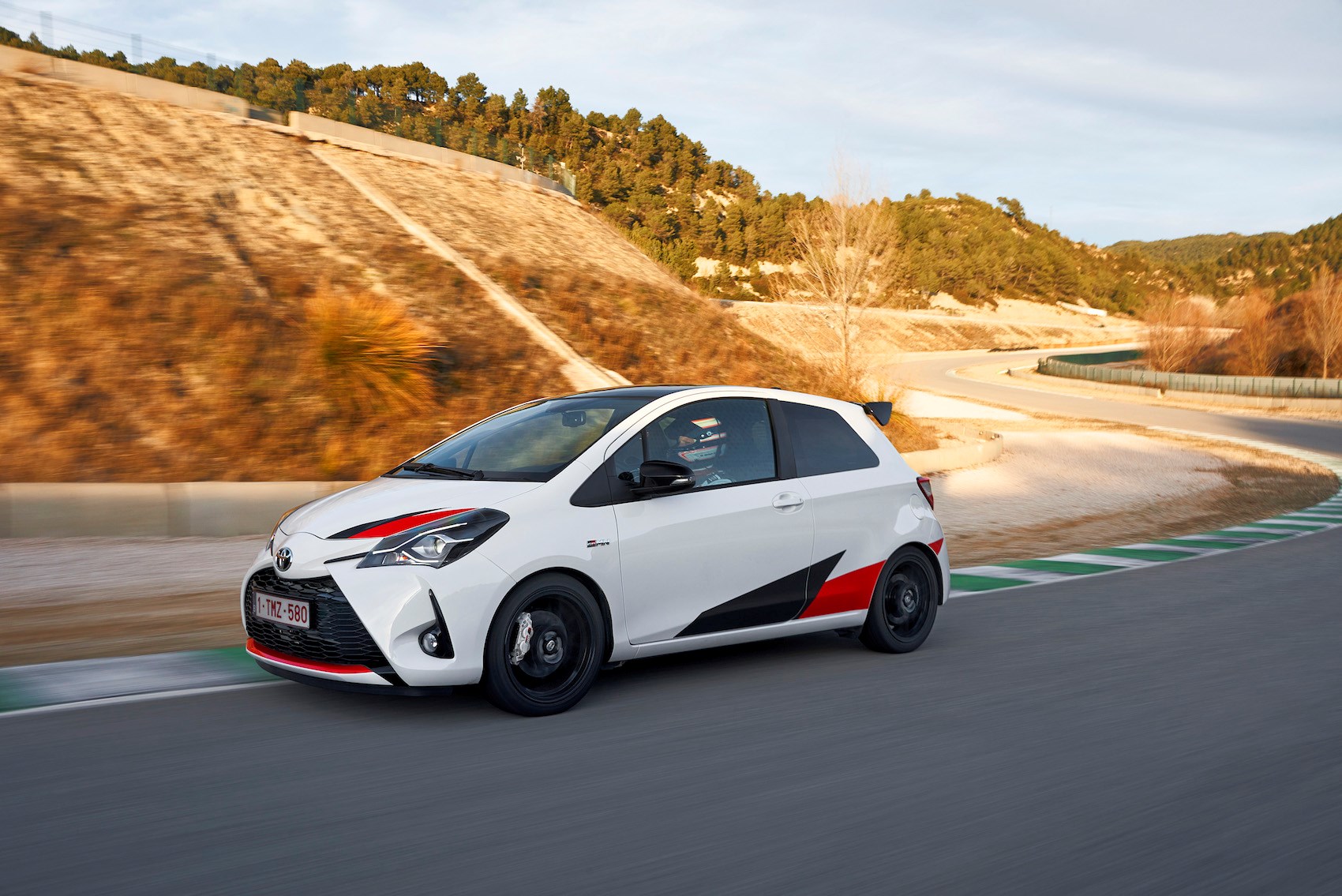
How so?
Sometimes you can tell a car’s personality from its spec sheet – and the Yaris boasts some pretty serious hardware – Sachs dampers, BBS forged alloys, four-pot brakes, a Torsen diff and a supercharged 1.8-litre motor; this is a car designed to impress enthusiastic drivers, not laboratory-based emissions testers or Toyota’s marketing department.
The story continues inside too – there’s a proper round steering wheel, grippy bucket seats, and exactly one driving mode. It’s the very definition of focus.
What you don’t get is a specific bodykit (save for the wing and central exhaust) or loads of crap carbonfibre in the cabin. The formula is very Renault Clio 182 Trophy, and like that car, you get the feeling Toyota was keen to invest in the chassis and drivetrain more than anything else.
Toyota Yaris GRMN review: a performance bargain like the Clio?
Err…no. It’s actually £26,295, which is Golf GTI money. Buy one on finance and it’s pricier than a Peugeot 208 GTi, MINI JCW and VW Polo GTI.
It’s also far from perfect. The sat-nav is quite hard to read, the (excellent) seats are set too high and the steering wheel doesn’t adjust enough. Plus the cabin plastics are a bit naff.
To add further complication, you probably can’t have one anyway – in a series of diminishing returns only 600 will be made, of which 400 will make it to Europe, leaving just 100 for the UK. Most countries filled their reservation books within 72 hours of opening them, too.
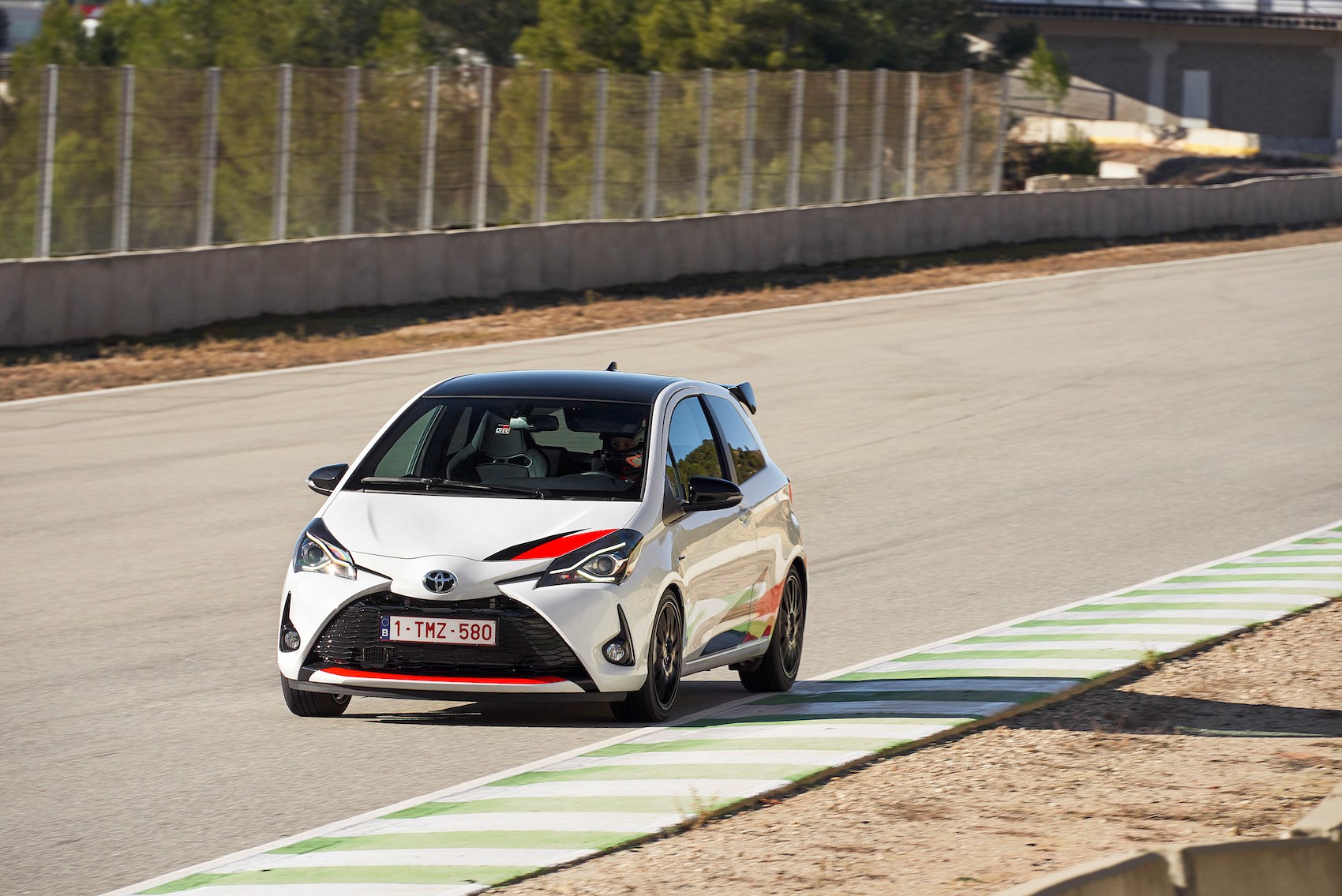
Right. Why are you still writing this road test then?
Well to use an industry cliché the Yaris GRMN is a Very Important Car for both Toyota and petrolheads as a whole. It’s also an absolute hoot, as we alluded to in our early drive. Since then GRMN’s engineers have tweaked the suspension and the steering somewhat, but the car remains largely the same.
One slight caveat though – the cars we drove on the Parcmotor circuit in Barcelona were fitted with super-aggressive Bridgestone Potenza track tyres you can’t legally use on the road – the only modification you’d need to make if you wanted to regularly track-day your Yaris, says Toyota.
That’s a noble point, but one that left the cars almost entirely tied down to the tarmac when we were looking forward to a bit of lift-off oversteer as previously experienced. One lap on cold rubber gave us an insight – this is a car that likes to pivot around you, just like a Ford Fiesta ST.
Toyota Yaris GRMN review: what’s it like to drive?
It’s a very serious bit of kit either on the track or the road, with stacks of grip and a super-linear power delivery that is the antithesis of its lazy, turbo-boosted rivals.
In reality it’s the front axle that comes to define the drive, like a SEAT Leon Cupra, thanks to that Torsen differential. It’s a very three-dimensional thing – you can point it neatly past an apex and lean on the outside wheels progressively, or pile in, mash the throttle and let the scrabbling mechanics underneath you work it all out.
That’s not to say the rest of the car is boring but everything else just kind of take a back seat to the way the Yaris turns in.
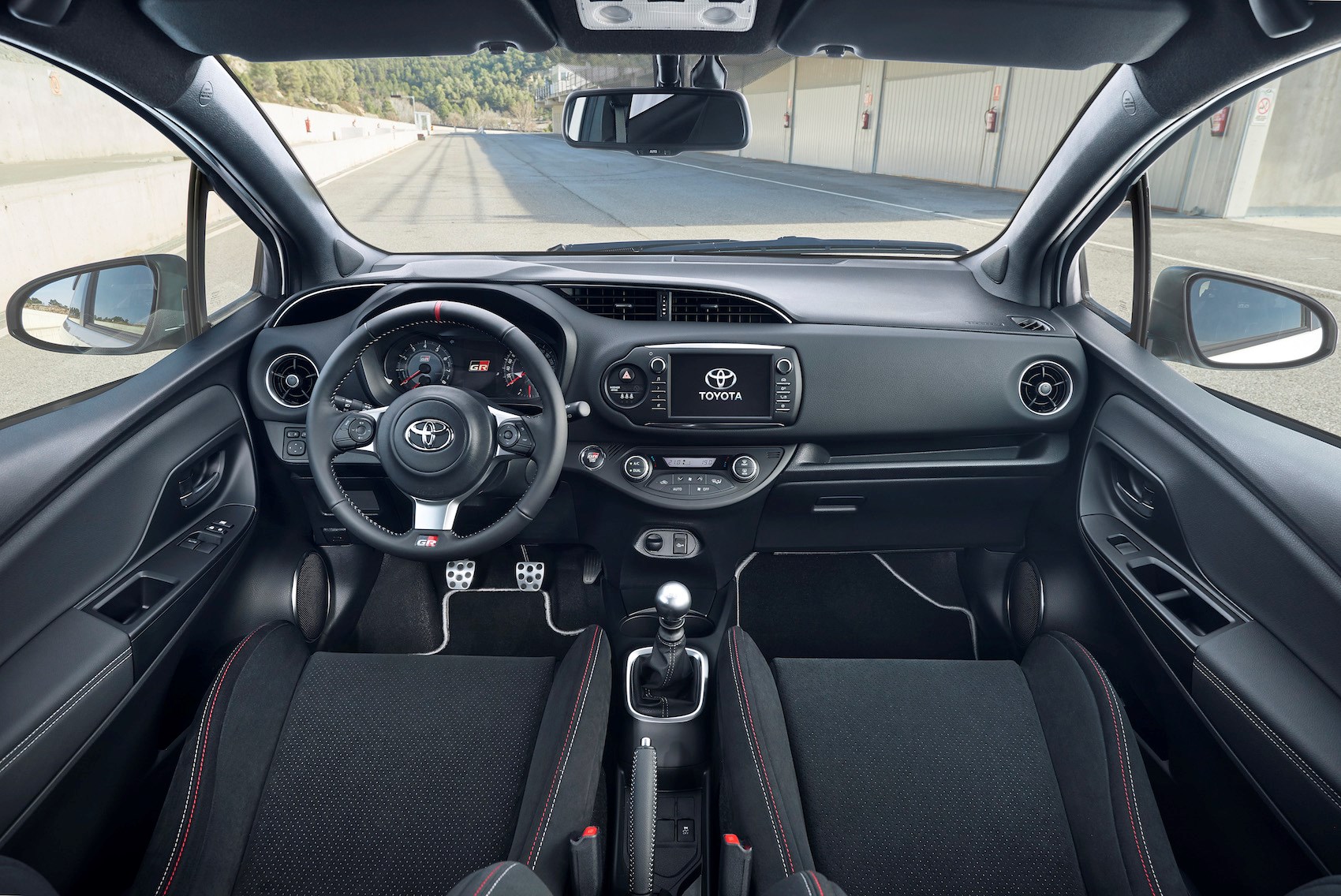
The engine makes a wonderfully unruly noise and the steering is satisfying too (although it does get oddly heavy when you load up the front tyres) and the reinforced gearshift snicks nicely between its ratios.
There’s also a touch more body movement than you get in a 208 GTI so it’s necessary to let the car settle between direction changes, but in a similar vein to the roly-poly Mazda MX-5, this gives you a welcome degree of driver involvement.
Toyota Yaris GRMN review: Verdict
The Yaris GRMN reminds us what hot hatches used to be about – unfussy, uncomplicated machines with the biggest engine possible crammed under the bonnet and suitable chassis reinforcements to ensure the handling matched the performance.
Sadly this first release from GRMN is an expensive, limited edition car, which means it’ll be out of the reach of many and will never reach the achievable mass appeal of the Ford Fiesta ST.
What remains to be seen is whether this Yaris, and the GRMN badge as a whole, can instead take on the same cult status as Toyota’s previous madcap tuner cars. We think there’s an exciting future ahead.
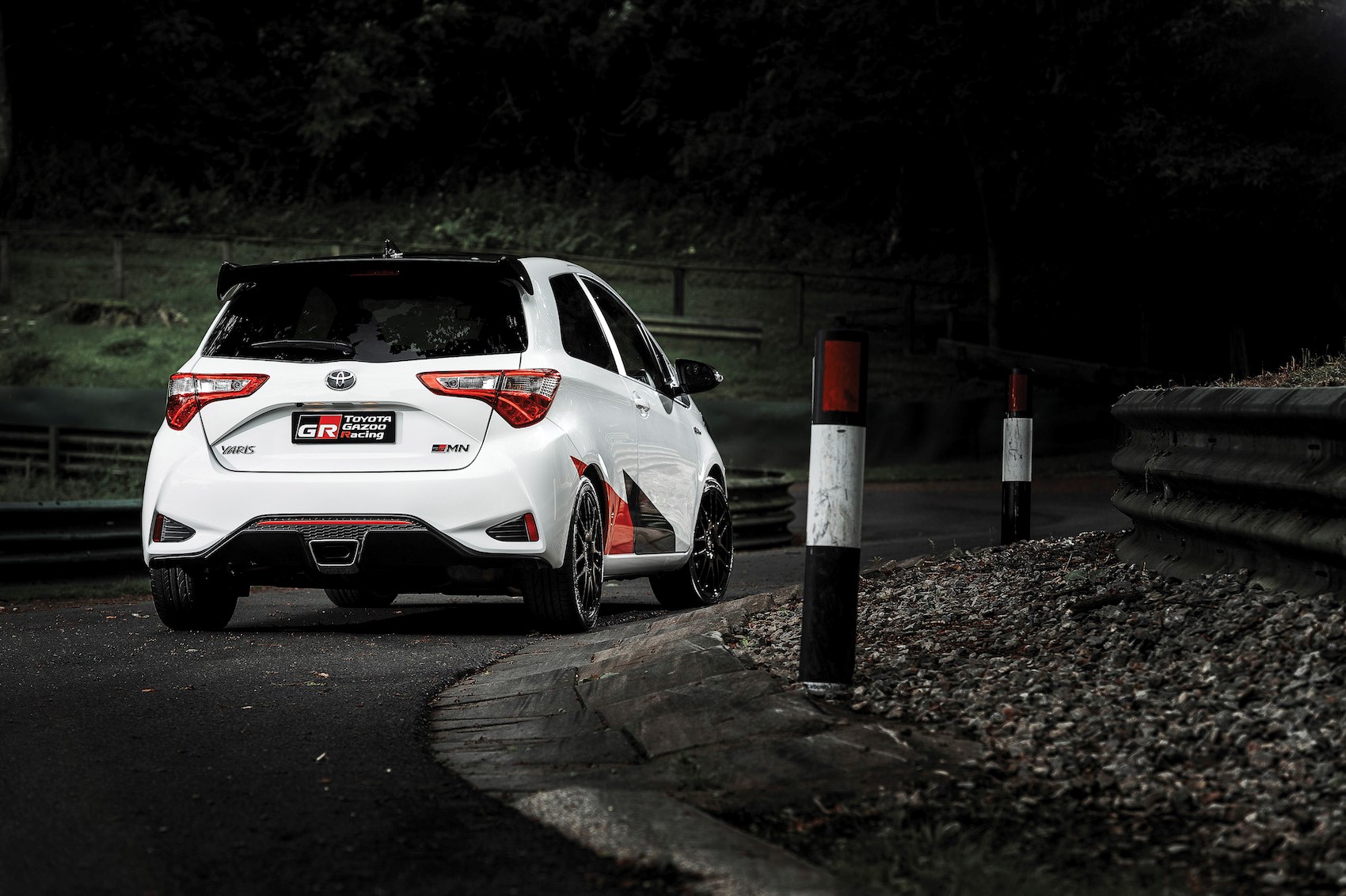
Toyota Yaris GRMN prototype drive
Last year, we got an early drive of a prototype at the Nürburgring. Here’s what we thought.
So, it’s a 1.6-litre turbo with four-wheel drive and paddleshift transmission?
Very funny. Tangible links between road and rally cars disappeared years ago, but the ingredients do sound pretty promising: a Toyota 1.8-litre four-cylinder engine is supercharged to achieve around 205bhp and 184lb ft. It puts all that lot through the front wheels via a six-speed manual gearbox and a Torsen limited-slip differential, and Toyota claims best-in-class times for the 0-62mph time (around 6.3-6.5sec) and 50-75mph time in fourth gear. It weighs just 1135kg.
The chassis features springs uprated by ‘over’ 61% and lowered by 24mm, uprated Sachs dampers, a larger diameter front anti-roll bar, 17-inch BBS alloys and – very promising, this – four-piston front brakes; something rarely featured on one-size-up hot hatches, let alone a car this small. The chassis has additional bracing, including a strut brace between the front suspension towers, and under-body bracing front and rear. As ever, there’s a torsion beam at the rear
The GRMN comes only with a three-door body, gets some flashes of red, white and black to reference Latvala’s WRC car, a rear spoiler, central exhaust outlet and rear diffuser. Inside, there’s a leather steering wheel pinched from the GT86 sports car, a pair of bucket seats and aluminium pedals.
Toyota Europe has been responsible for the exterior and interior design, with Japan taking care of the chassis and brakes. The GRMN will be manufactured at the Valenciennes plant in France.
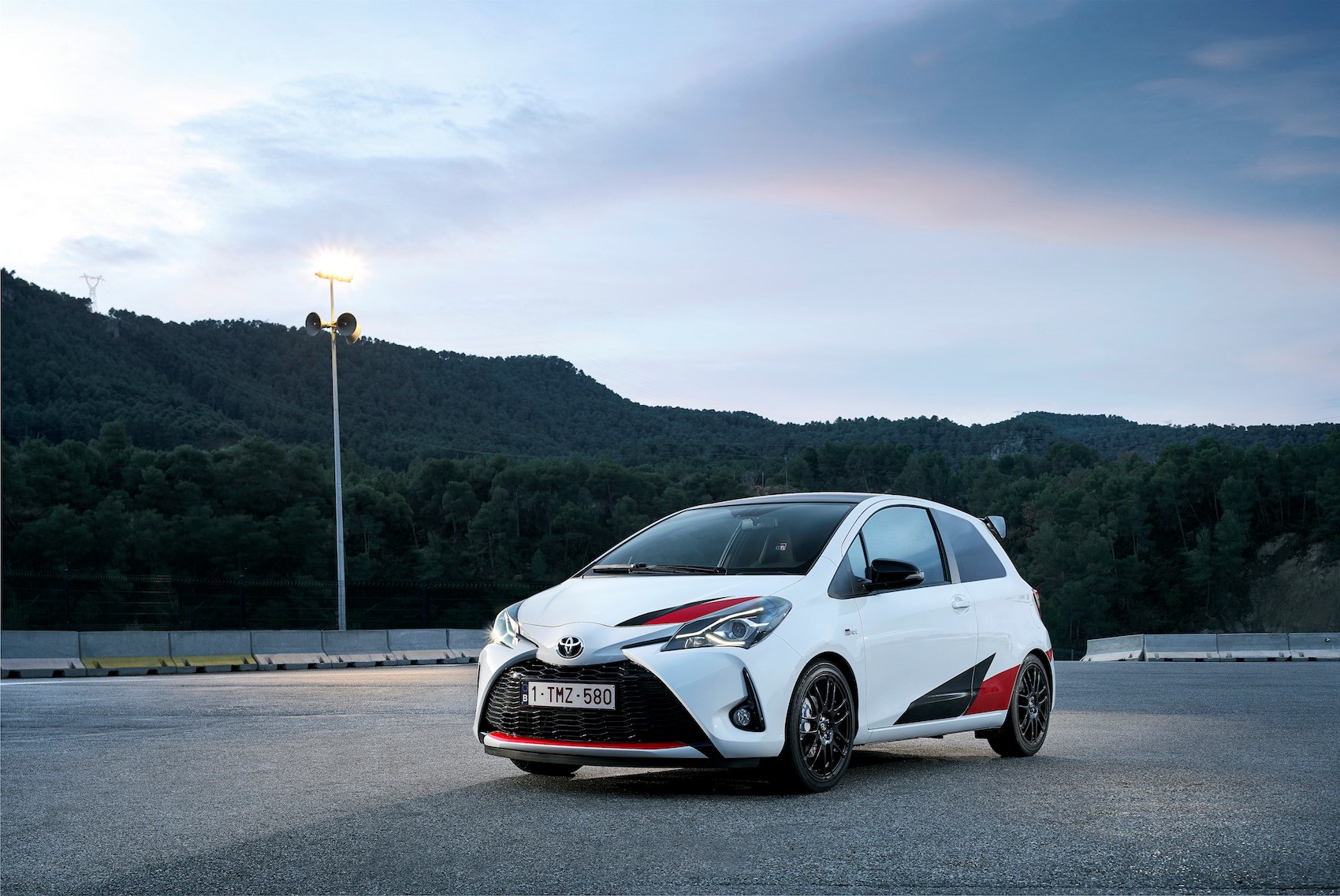
Where does this engine come from?
Interesting story. It’s made at Toyota’s Deeside plant (neatly also used as the WRC service park for Rally GB), then gets injectors from a Toyota V6 (but four, obvs), 40% larger throttle body and a modified calibration.
From there it’s sent to Lotus to add the Magnusson Eaton rotor-type supercharger (Lotus does the same with the Elise, which also uses a Toyota engine, remember), and then onto France for assembly. To reduce back pressure, the exhaust pipe diameter is up from 42mm to 60mm, and runs through a single catalyst from a V6 model.
If this all sounds like a lot of expensive messing, it’s clear that insiders doubt the GRMN will make any money, though they don’t explicitly say as much. There’s something pretty refreshing about that.
What’s the Yaris GRMN like to drive on the road?
It’s a feisty little thing. The ride is stiff, the exhaust note pretty brash (its hollow bwwwaaarrrr sound is reminiscent of a WRC car, but sounds more the result of sticking a big-bore pipe on rather than any specific tuning), and the handling quite edgy.
But there’s an exciting rawness and charm too. At speed, the ride settles, so while it’s still firm, there’s enough compliance to ensure you won’t get bounced off the road, even on some badly rutted bits of road in the Eifel region. The GRMN was also tested on UK B roads to ensure the diff didn’t tug about on the crown of the road, Mk1 Focus RS-style.
The limited-slip diff wasn’t in the plan from the beginning due to the steering corruption that can be caused by such a component, but it works well. The front end isn’t as keen to bite as, say, the Peugeot Sport 208 GTi, but it does allow you to power on early through a bend, and while there is some understeer if you push hard, it’s progressive and helps telegraph the limits. It also helps contain wheelspin without tugging all over the road surface – apparently adding the front strut brace calmed this tendency considerably, as did a spec that allows for some slip at one wheel on low-grip surfaces and when high amounts of steering lock are applied.
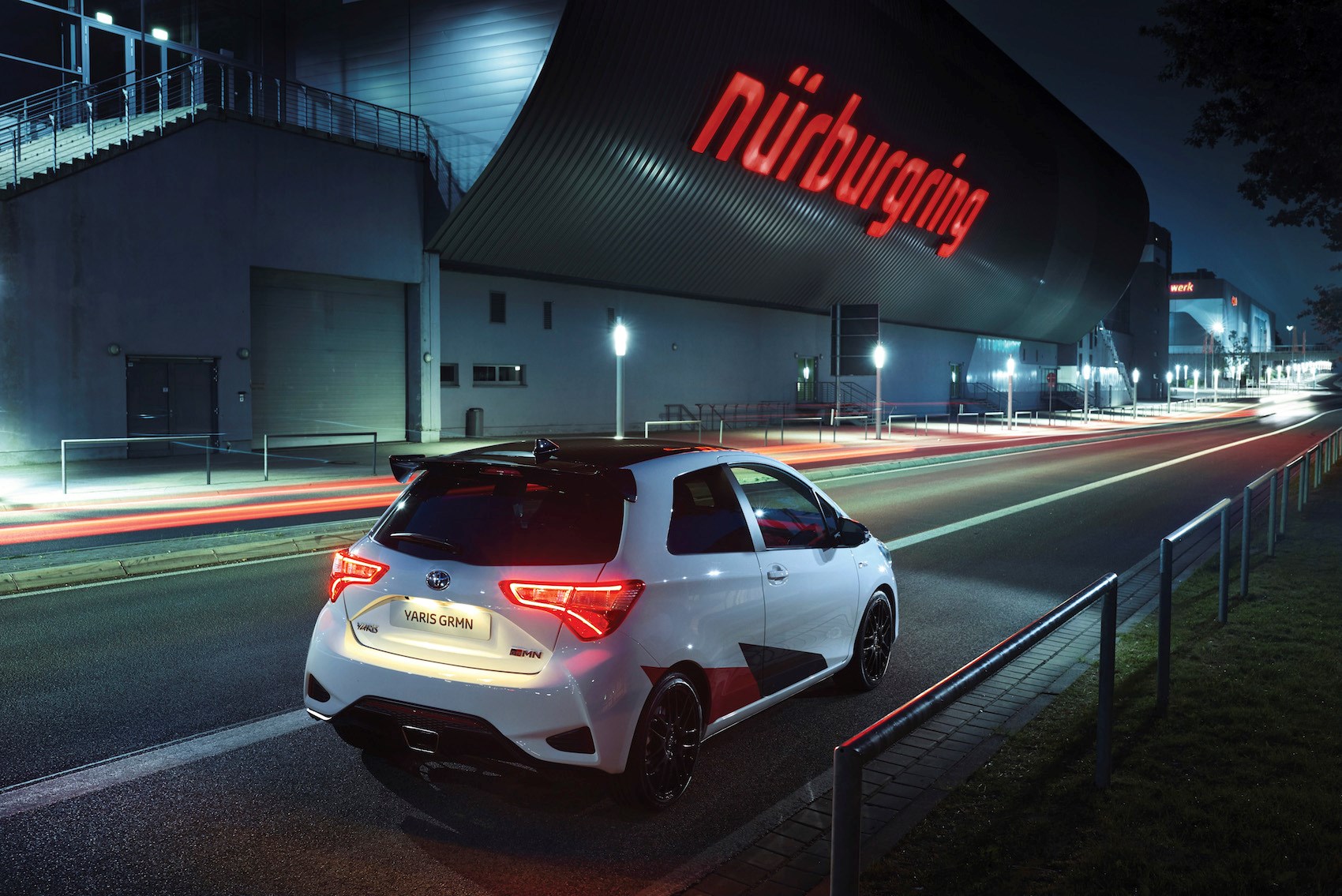
With such a short-wheelbase and stiff suspension, the Yaris feels very keen to jig its torsion-beam rear end around; it helps agility and adds quite a dramatic edge to the drive, but your grandma would be off at the first roundabout.
The GRMN is not a particularly quick car, and there’s no real kick to the power delivery, it just builds progressively, but even removing a passenger makes it feel considerably fleeter – testament to the bigger impact removing weight from an already light car has. Either way, you have to work it hard to access its peak torque of 184lb ft at a high 5000rpm – none of the low-down juice of turbo power here.
The four-piston brakes are pretty fantastic, with keen feel and stopping power so strong there’s no way you’d mistake them for carryovers from a lesser model –they really define the drive.
There is one driving mode, accessed by starting the engine. Hurrah for that.
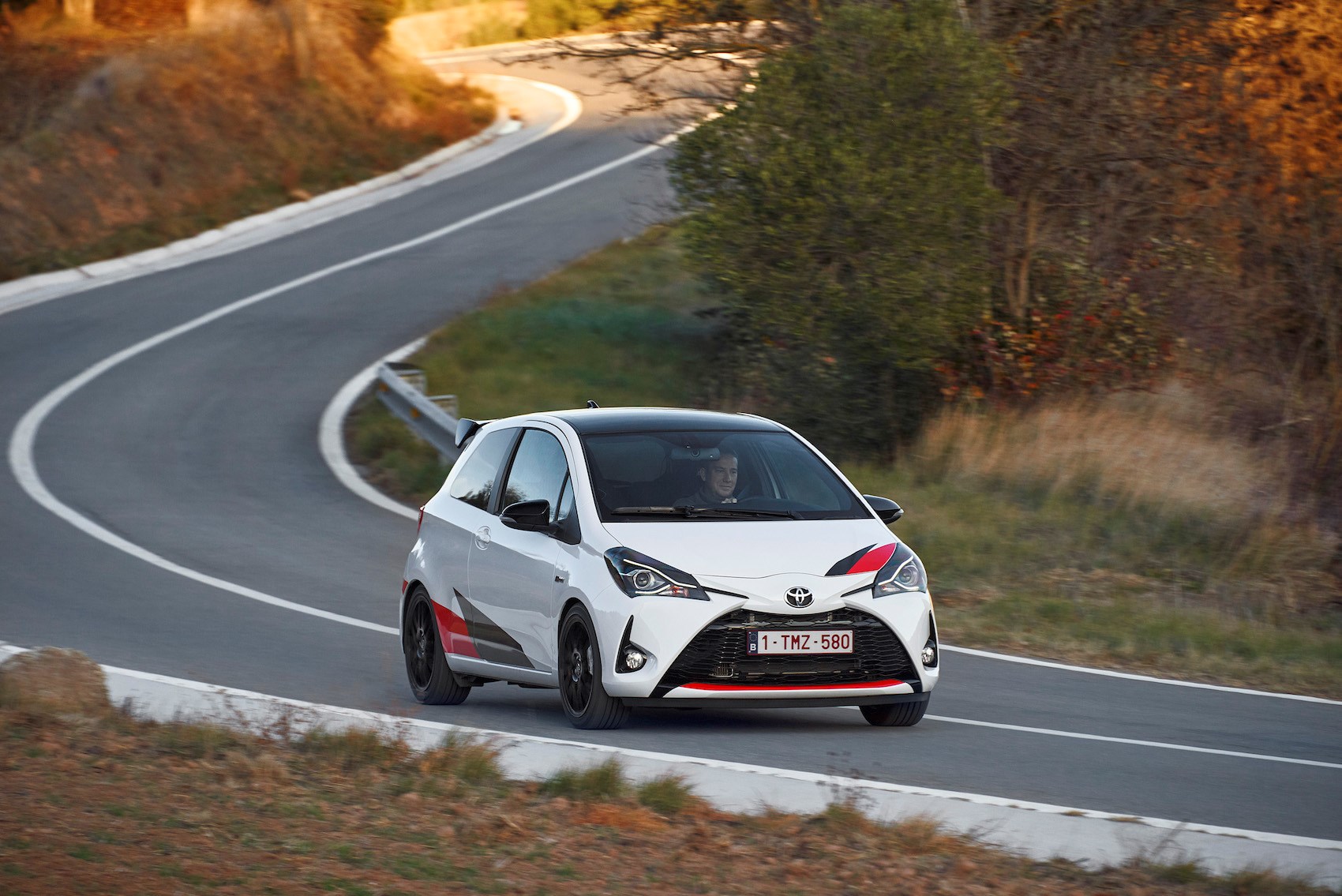
Any flaws?
Yep. The steering is nice and light and quick enough too, but it is unnecessarily aggressive in its self-centring motions.
The driving position isn’t great – the seats hold you well and are comfortable, but they perch you up high, and the steering wheel adjustment is limited; that there’s been no attempt to match the front and rear seat trim also betrays a certain hastiness/lack of room to push the price up even further.
The pedals could be better aligned for heel-and-toe, and the gearshift shorter and tighter.
Considering there’s a proper mechanical limited-slip diff up front, the traction control is a little too eager to electronically snuff out wheelspin. In tighter corners, I also wanted a little more roll support from the front end – perhaps ambitious given the already very firm springs, but there you go.
So, quite a few niggles, but ultimately this is a fun, raw kind of hot hatch. I enjoyed driving it, and the lap of the Nordscheife was fun too.
Go on then, how was it on track?
Again that raw energy defines the Yaris GRMN, and it feels much more serious than, say, the last – and very excellent – Fiesta ST.
Like on the road, you can lean right on the edge of understeer to feel your way through the corner while still clawing traction out of the surface without frustrating wheelspin, the brakes again give you confidence, and the performance doesn’t actually feel out of its depth at a place as fast as the Nürburgring.
The GRMN’s lightness, short wheelbase and highly adjustable balance – where lifting the throttle and/or braking hard readily makes the rear end slide – keeps you on your toes as the consequences really rack up with speed, but the stability control does a good job of keeping it all in check without getting over zealous. It makes it feel like an enjoyable, rewarding challenge at a place like this, not a slow car to be thrashed around joylessly.